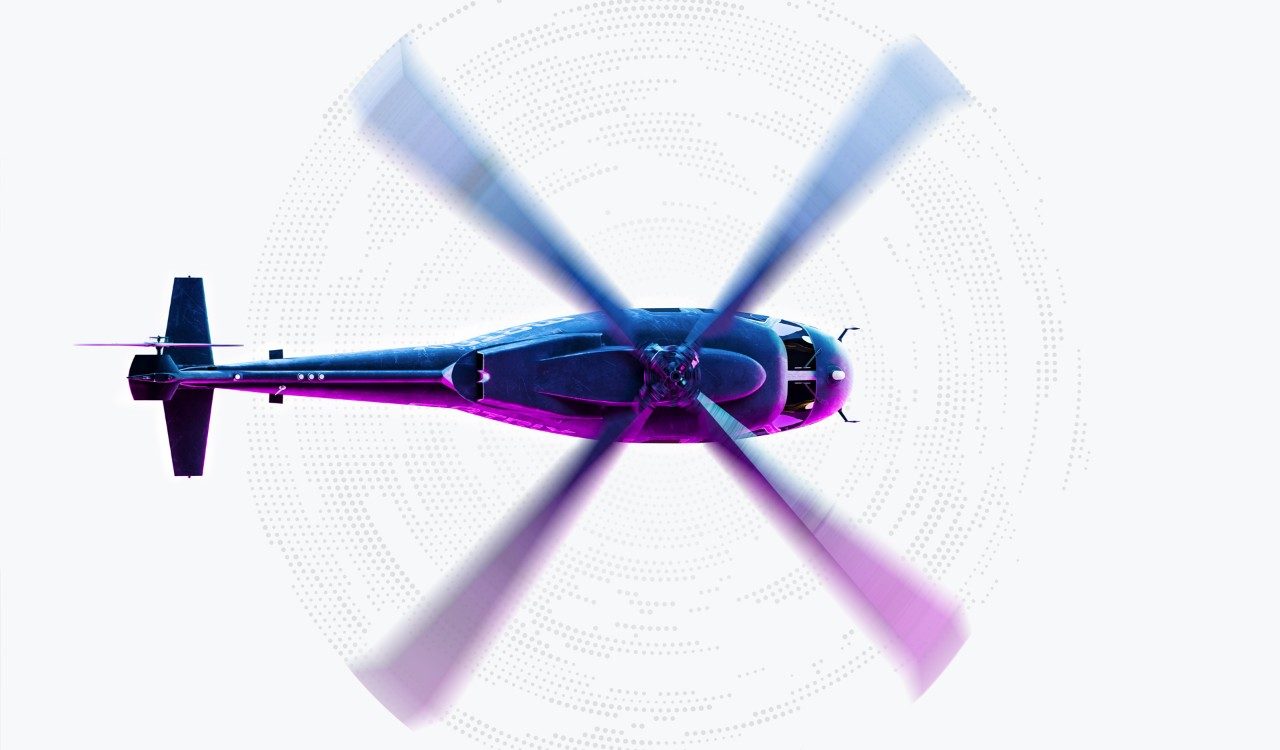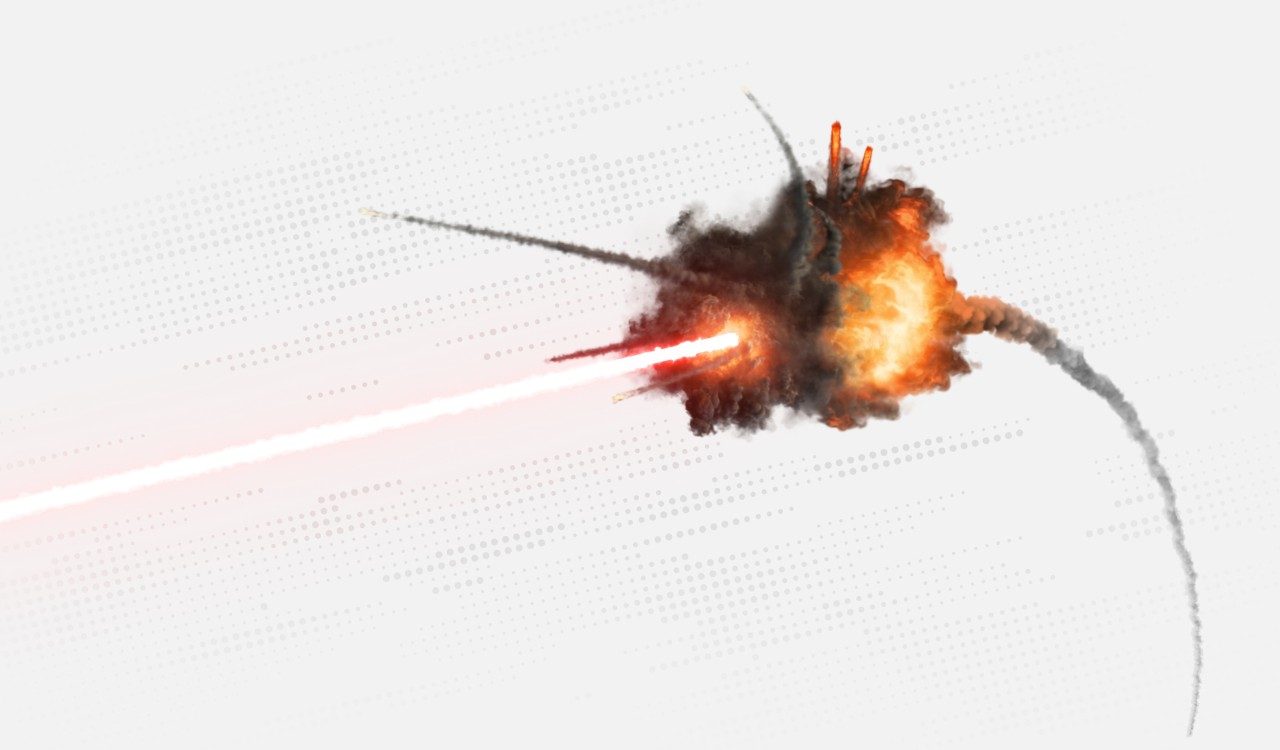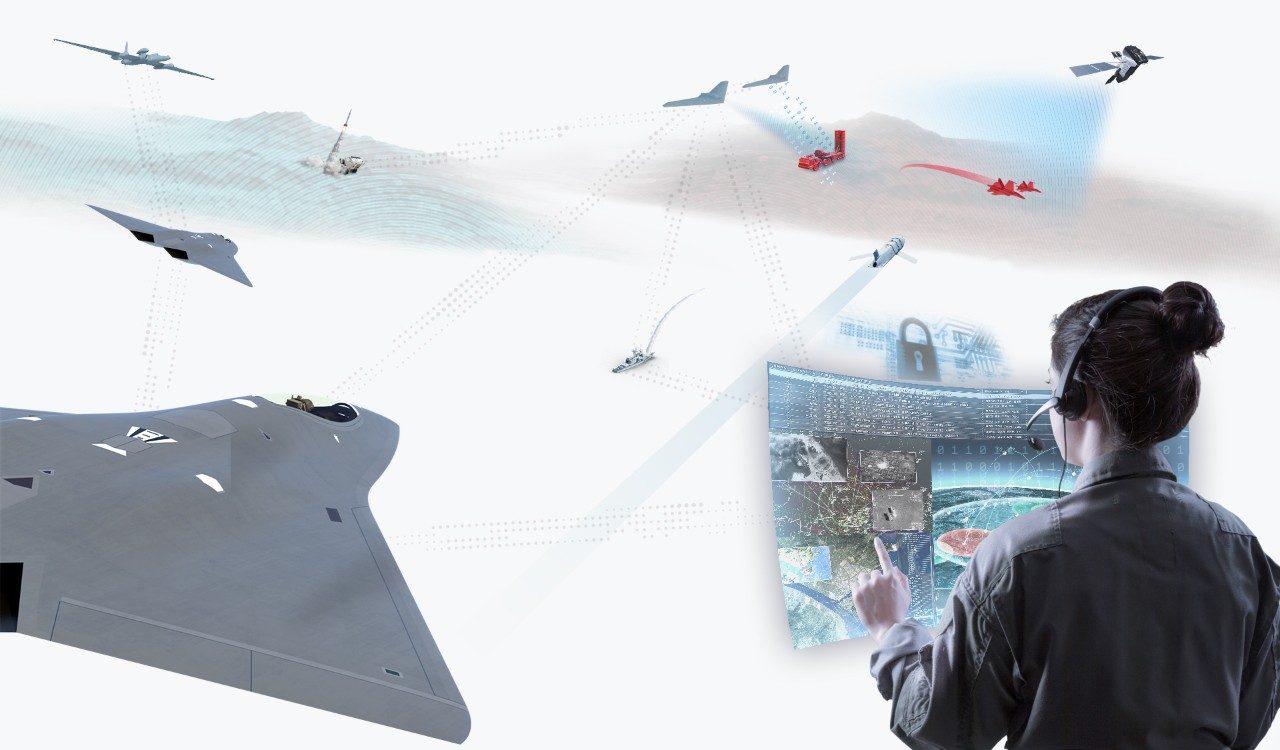Hypersonics | Deploying Laser Systems | Decoding the Human/Helicopter Language
Our Lockheed Martin technology experts weigh in on the hottest trends. Here are their picks of technologies to watch for the years ahead.
1. Artificial Intelligence and Autonomy

There’s no doubt that on the battlefield and at home, autonomy and artificial intelligence (AI) are rapidly becoming part of our daily human experience. And when it comes to human-machine collaboration, we know teams take many shapes. At Lockheed Martin, the future of these technologies isn’t human-less, it's human more.
“AI is an enabler for augmenting what people are doing every day, giving them the tools to achieve more, faster, and with greater efficiency,” says George Hellstern, program manager at Lockheed Martin Skunk Works®. "We are working across the corporation to create a dynamic team between operator and vehicle. We have integrated physiological sensors to provide feedback about the pilot to the vehicle and incorporated a concept of human intent to augment human performance."
You can see this human-machine relationship in play with our MATRIX™ technology – it will allow for two, one or zero operators to be on board, depending on the mission. A pilot could choose to have additional help during complex missions, or during more routine scenarios, an operator could use the virtual co-pilot so they are freed up to do additional tasks. “We’ve flown more than 131 test flights with this technology in SARA, our Sikorsky Autonomy Research Aircraft,” said Igor Cherepinsky, Director of Autonomy at Sikorsky Innovations. “It’s a modified S-76B, or basically a flying lab, where we mature our technology.”
When it comes to the power of autonomy, the proven Skunk Works® developed Automatic Ground Collision Avoidance System, or Auto GCAS, detects when something has gone wrong in flight and takes control before a crash – saving the plane, and more importantly, the life of the pilot. In addition to the Auto GCAS, Skunk Works® and the U.S. Government have also developed an Automatic Air Collision Avoidance System (Auto ACAS). As its name suggest, Auto ACAS is designed to avoid air-to-air collisions. Together, the two systems form the Automatic Integrated Collision Avoidance System (Auto ICAS), the world’s first fully automatic integrated combat flight safety system designed to prevent both air-to-air and air-to-ground collisions.
It’s one thing for a company to develop self-driving cars in predictable environments using existing data. Lockheed Martin engineers are building AI systems aimed at saving lives and increasing mission success in the toughest and most unpredictable of situations.
Sound like a challenge you’re up for?
2. Quantum Computing

The quantum age is knocking at our door. Some say the significance of this emerging technology is equivalent to the Wright Brothers at Kitty Hawk or Neil Armstrong on the Moon.
If you asked a “classical” computer (like your laptop or desktop) to complete the problems we’re asking quantum computers to do, it would take longer than the age of the known universe to solve.
How is this possible?
“Take space travel – our engineers must review every possible trajectory a spacecraft might take to get to its destination. Even with high-performing computers that can calculate at lightning speed, there are so many possibilities that this approach is too slow. With quantum computing, our engineers and astronauts can simulate all these trajectories at once using interconnected qubits to model space itself with all its gravitational and inertial forces and use that model to find the optimal pathway to the goal without having to test each possibility – all within milliseconds.”
Quantum technologies are also poised to enable completely secure communication networks (think quantum credit cards that no one but you can access), and highly sensitive sensors for biomedical imaging and laser surgery – among other exciting potential applications.
Lockheed Martin scientists are already harnessing powerful quantum technology to consider challenges beyond the scope of anything previously thought possible.
3. Directed Energy Solutions

We think lasers are cool. And our engineers are at the forefront of transforming high-power laser technology developed for factories (think cutting, welding and machining applications), into inventive and cost-effective defense capabilities for the warfighter.
Directed energy is a fast-paced and exciting business at Lockheed Martin. Many of our laser weapon teams run like small start-ups, and across the board are driven by engineers with expertise in every area of directed energy development—and increasingly production.
“Customers are increasingly looking to transition laser weapon systems from the lab to the field,” said Bryan Gundrum, Directed Energy program manager for Lockheed Martin. “Our team is the best in the world at both designing high-energy lasers and manufacturing the complex, high-performance optical targeting systems required to field them.”
4. Multi-Domain Operations

Today’s challenges to global security aren’t just changing – they’re rapidly accelerating more than ever before. We know the battles of the future won’t be simple or fought on a single battlefield. Every warfighter, aircraft and system operating across the sea, ground, air, space domains will need to instantly and simultaneously share critical information to ensure mission success.
This future battlespace capability requires Multi-Domain Operations, and that is no easy task.
For more than a decade, Lockheed Martin has worked alongside the Department of Defense to develop architectures, mature critical technologies, and explore concepts of operations that will enable Multi-Domain Operations across the military branches to allow fast decision making, and create multiple, simultaneous, complex problems at a speed our adversaries cannot match.
“With a deep understanding of our nation’s challenges and a clear vision for the future battlespace, we have been leading the development of Multi-Domain Operations enablers for more than a decade,” said John Clark, Vice President of Lockheed Martin’s Skunk Works®. “We’re focused on connecting systems by ensuring every element is a collector, a sharer and a learner to move data faster than ever before. This involves integrating our expertise in emerging technologies such as autonomy and AI, cyber security and open architectures to ensure mission success.”
These enablers aren’t just concepts on paper – they’ve been proven to work in multiple exercises and demonstrations. Lockheed Martin continues to be a leader in partnering with the U.S. military to make Multi-Domain Operations a reality – the future is closer than you may think.
5. Hypersonic Technologies

The ability to travel fast is a hallmark of science fiction movies. The Starship Enterprise, Cheyenne Dropship and Millennium Falcon—all have their roots in aircraft or space planes that can travel at speeds well over Mach 5.
Today, the dream of technology traveling across the world in a few short hours is getting closer to reality.
Engineers at Lockheed Martin are taking lessons from early hypersonic flights, combined with the latest advancements in aviation technology, to design and develop the next wave of mission-critical hypersonic vehicles.
Past Innovation, Meet Future Application
More than 50 years ago, a B-52 aircraft took off from Edwards Air Force Base in the hot, dry desert of California, carrying under its wing a rocket-powered experimental aircraft—the North American X-15. At 45,000 feet, the X-15 was launched into flight, reaching speeds of 522 miles per hour and landing at Rogers Dry Lake just a few miles away.
While the pilot would only have five minutes of actual flying time, the monumental first flight of the X-15 would set the stage for later tests of the winged aircraft that would be the first to attain velocities of Mach 4, 5 and 6.
The era of hypersonic flight had arrived.
How Fast is Hypersonic Fast?
Subsonic = <610 mph | Transonic = 610-915 mph | Supersonic = 915-3,840 mph | Hypersonic = 3,840+ mph
Our engineers are leveraging the work of several decades, including the Hypersonic Technology Vehicle-2 (HTV-2) that flew in 2010 and 2011, to design hypersonic vehicles that will stay ahead of the advancing threat.
Modern passenger airplanes fly at 550 miles per hour, or about 8 miles per minute. A Mach 2 fighter jet flies at about 1,400 miles per hour, or about 20 miles per minute. At speeds of Mach 5 and higher, friction can heat an aircraft’s exterior enough to melt a conventional metallic aircraft, creating a number of complex engineering and physical challenges.
With its extensive experience designing aircraft and missiles, Lockheed Martin leverages expertise from across the corporation to tackle these challenges with ingenuity and speed — yes, even more speed.




